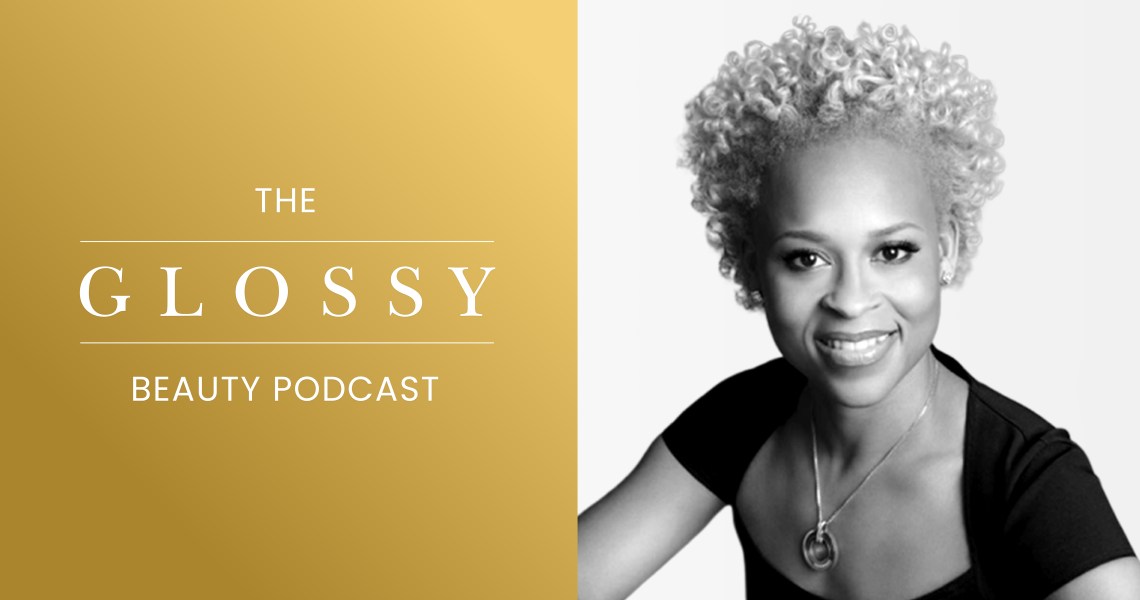Subscribe: iTunes | Stitcher | Google Play |Spotify
Esi Eggleston Bracey began her career nearly three decades ago at Procter & Gamble and is now evp and COO of beauty and personal care at Unilever North America. She’s well aware of what it’s like as part of a large organization with legacy brands, but she doesn’t think being big has to be a hindrance to being nimble.
“Today, there is so much disruption happening in every industry, and you see it in beauty,” said Eggleston Bracey. “A few years ago, there was a real sentiment that you had a headwind against you if you were a big brand — that big brands can’t grow because of all the new brands, indie brands, DTC brands that are disrupting them. What we’ve seen — and Dove is a great example — is that big brands can grow, and when you grow a big brand, you have even more impact. To grow, you have to make sure that the brands are really relevant to the issues of today, and we’ve been able to do that with Dove.”
On this week’s episode of The Glossy Beauty Podcast, beauty editor Priya Rao sits down with Eggleston Bracey to discuss why she wanted to be at a company that puts beauty at the forefront, how a shift in consumer values has impacted her brands, and how she decides between the incubation, acquisition and pivoting of brands. Edited highlights below.
A beauty-first CPG brand
“My 25 years at P&G were really about growing marketing that was focused on people and their needs, and creating a business out of that. During that time, I had the pleasure of running the makeup business Covergirl, and that’s where I found my first true love for beauty. Makeup is so much fun, and for someone like me who is obsessed with problem-solving, it’s complicated. Covergirl at the time had maybe 1,000 SKUs. So you’re always managing the 80-20 — what do you need to focus on to make the business grow, while also trying to figure out what women really want. I also ran, at P&G, a lot of the businesses that I do now, so I’d say I really got my fundamental training there. The problem with P&G was that beauty was more of a hobby than a profession. I was interested in doing something where beauty was at the core, so I ended up going to Coty, and then to Unilever where beauty and personal care is a majority of the business.”
Shifting consumer values
“I see three big movements happening that are consistent, but they continue to evolve. One is that, with everything going on in the world, there is a crisis of trust. The world is so volatile. For the first time, we’re seeing the effects of global warming on us. There’s an absence of trust in our politicians, and we’re skeptical about media, news, social media, what’s happening with our elections. This crisis of trust is raising the bar of what brands need to do and how people engage. The other movement is that people are living differently, and there’s so much more diversity in people, one-size-fits-all doesn’t work. In the old days, when you were listening to people, you would listen to what they had in common and what could you do to create a big idea that would sell and have the most impact on people. Today, you don’t listen for that. You listen for the pockets of opportunities to differentiate and meet the needs of the variety of people that are out there. The demographic and generational mixes are like never before. The way you listen is so different today. You’re listening for the diversity and variety of needs, and how to serve those. You’re listening for how you can reestablish trust and confidence in brands. Then you’re also listening to this other thing that we see, which is how people want to take more control of their environments and communities. People want to make choices and help with their pocketbooks.”
Ad position: web_incontent_pos1
Acquiring versus incubating brands
“The idea of incubation is taking control of the opportunities you see. You can incubate, acquire or pivot a core brand into a new benefit space. When you pivot a brand, you have to be mindful of where that brand has come from, and what credibility that brand has. When you go into acquisition, you don’t have a lot of control, because there are lots of options and other people vying for the same brands. You don’t know where that’s going to end up. When you incubate, you can be really clear on the audience you want to serve and the impact you want to have. You really can create that from scratch.”




